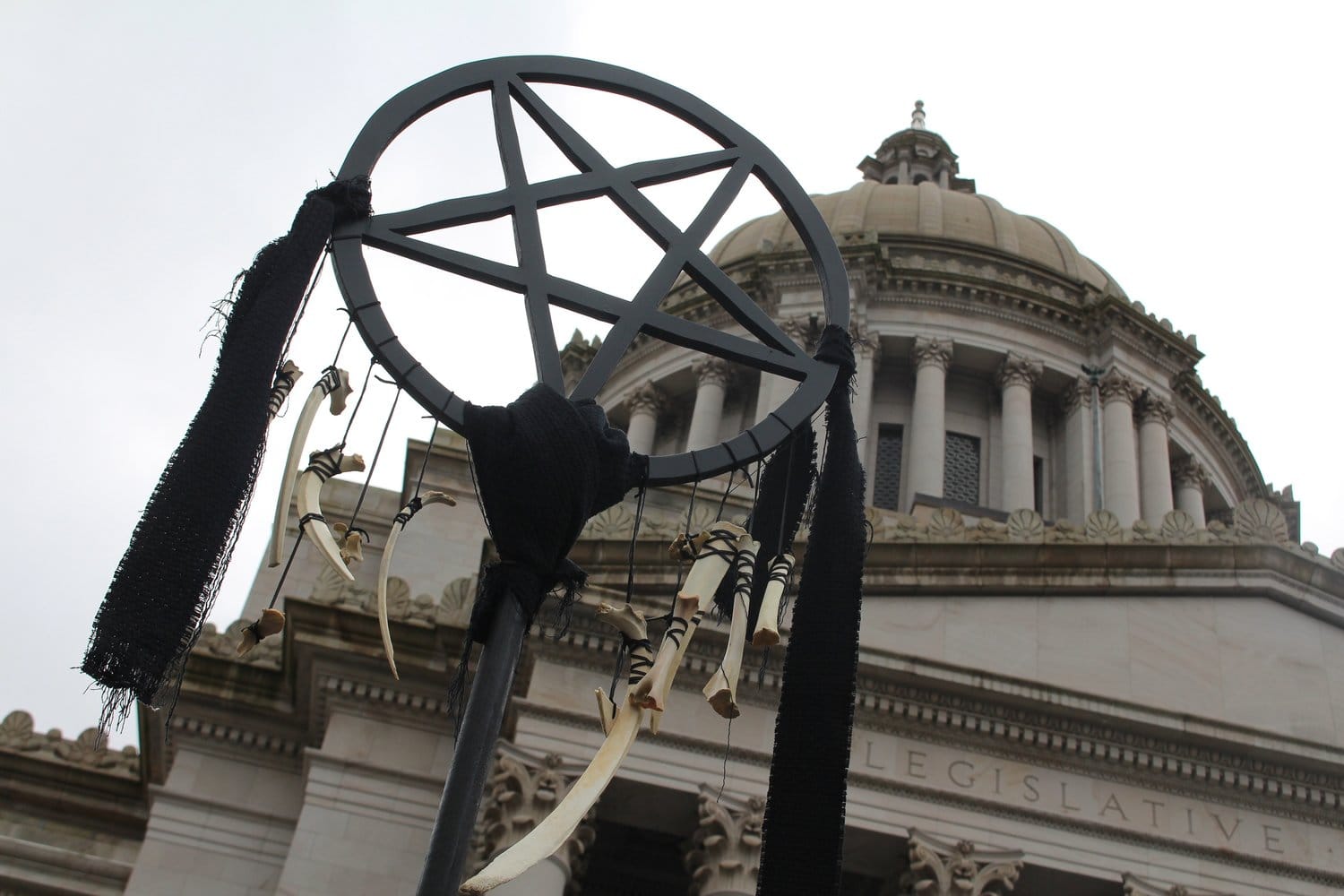Decoding the Capital’s Layout: Is There a Secret Symbol?
Whispers travel through the streets of Washington D.C., hinting at a secret symbol woven into the city’s fabric—the “Washington DC pentagram.” This supposed five-pointed star, connecting landmarks like the White House and Dupont Circle, has captivated imaginations and fueled conspiracy theories for years. But is there any truth to it?
The intrigue stems from the observation that certain streets and landmarks appear to align in a star-like pattern. Some, particularly those drawn to the allure of the unknown, believe that Pierre Charles L’Enfant, the city’s designer, intentionally embedded this symbol as a nod to secret societies or ancient wisdom. However, no official documents or historical drawings support this claim.
Unveiling the Symbolic Landscape of Washington, D.C.
Beyond the pentagram debate, Washington, D.C., itself is a carefully crafted tapestry of symbolism. The city’s design, monuments, and even its flag whisper stories of power, ambition, and the ever-evolving American narrative.
Pierre Charles L’Enfant envisioned a capital that would command respect and showcase the nation’s strength. His design, with its grand avenues, expansive spaces, and sightlines, was a deliberate projection of order and unity. The Capitol Building, symbolizing democracy, and the White House, representing executive power, further solidified this image of stability and resilience for a young nation seeking its place on the world stage.
The Freemasonry Connection
Adding to the intrigue is the historical presence of Freemasonry. George Washington, a Freemason himself, oversaw the city’s early development. This has led some to speculate about potential Masonic influences embedded within the city’s layout and architecture. While the possibility is enticing, it is crucial to differentiate between speculation and historical fact.
Deconstructing Popular Symbolism
Amid the quest for hidden meanings, it’s essential to examine popular symbols with a critical eye. Take, for instance, the “Pentagram City” myth. While the visual alignment of certain intersections might suggest a deliberate pentagram, historical maps and L’Enfant’s own radial design make coincidence a more likely explanation.
Similarly, the “Eye of Providence,” found on the dollar bill, has been linked to various interpretations, from Freemasonry to Enlightenment ideals. The meaning of symbols can be fluid, shifting with societal perspectives and historical context.
Even the monuments themselves are subject to evolving interpretations. The inscription on the Jefferson Memorial, praising liberty while omitting Thomas Jefferson’s history as a slave owner, highlights the complexities of America’s past and the ongoing dialogue surrounding its legacy.
Washington, D.C. Today: A Living Tapestry of Symbolism
The story of Washington, D.C., is not confined to history books. It’s a narrative that continues to unfold. Modern additions like the Vietnam Veterans Memorial, the Franklin Delano Roosevelt Memorial, and the National Museum of African American History and Culture add new layers of meaning to the city’s landscape, reflecting on themes of loss, leadership, resilience, and the ongoing pursuit of equality.
Moreover, the city’s symbolic spaces have become platforms for protests and demonstrations, shaping national conversations about civil rights, justice, and the meaning of American identity.
Ultimately, Washington, D.C.’s symbolism transcends individual monuments or hidden codes. It challenges us to look beyond the surface, ask questions, and engage in meaningful conversations about what it means to be an American.
Unlocking the Pentagon’s Secrets: What Do Those 5 Sides Represent?
The Pentagon, headquarters of the U.S. Department of Defense, stands as an iconic symbol of American military might. But the meaning behind its five sides remains a source of speculation. While often attributed to the surrounding road layout, no definitive symbolic interpretation exists.
Beyond the Road Layout
One common theory suggests that the five sides were a practical response to the initial land being bordered by five roads. However, this doesn’t preclude the possibility of an intentional symbolic layer woven into the design.
Exploring Potential Symbolism
Several interpretations have emerged, each offering a unique perspective on the Pentagon’s design:
- Military Unity: The five sides could represent the five branches of the U.S. Armed Forces—Army, Navy, Air Force, Marine Corps, and Coast Guard—converging under one roof, symbolizing a unified defense strategy.
- Strength and Resilience: The pentagon, a geometric shape known for its inherent strength and stability, could represent American military power and resilience. The building’s survival of the 9/11 attacks further reinforces this symbolism.
- American Ideals: The five sides, echoing the five points of a star, might be interpreted as a symbol of American patriotism, ambition, and global leadership in military affairs.
The Pentagon as a Cultural Icon
Beyond its physical structure, the term “Pentagon” has become synonymous with the U.S. Department of Defense itself, highlighting its significance in global affairs. Its prominence in popular culture—movies, TV shows, books—further cements its status as a symbol of American military power.
The Pentagon’s Enduring Mystery
While the true meaning behind the Pentagon’s five sides may remain elusive, the building itself stands as a powerful symbol of American military might, resilience, and influence on the world stage. Its unique design continues to spark curiosity and inspire debate, leaving us to ponder the intentions behind its creation.
Deconstructing the D.C. Flag: A Banner Rich with History and Symbolism
The Washington, D.C. flag, with its bold red stripes and three prominent stars on a field of white, is more than just a city emblem. Its design, directly derived from George Washington’s family heritage, echoes across centuries, connecting the nation’s capital to its founding father.
From Family Crest to City Symbol
The flag’s design originates from the coat of arms bestowed upon Lawrence Washington, George Washington’s 3rd great-grandfather, in 1592. This lineage is a powerful symbol of the city’s connection to American history.
In 1924, illustrator Charles A.R. Dunn, inspired by the Washington family crest, submitted a design featuring three cobalt blue five-pointed stars to the Evening Star Newspaper. This early iteration paved the way for the D.C. flag we recognize today.
The Long Road to Recognition
Prior to 1938, Washington, D.C., lacked an official flag. Unofficial banners, including the D.C. National Guard flag, were commonly used. Finally, after a 14-year deliberation process by a congressionally appointed commission, the current design was officially adopted on October 15, 1938.
Unraveling the Flag’s Symbolism
While no official documentation outlines the specific symbolism of the D.C. flag’s elements, popular interpretations abound:
- White Field: This likely represents purity, innocence, and peace, reflecting the ideals upon which the nation was founded.
- Red Stripes: These probably symbolize valor, courage, and the sacrifices made by those who fought for American independence and continue to defend the nation.
- Three Stars: One theory suggests that these represent the three commissioners who once governed the District of Columbia, a nod to the city’s unique political structure.
The D.C. Flag Today: A Symbol of Local Pride
The D.C. flag has transcended its initial purpose as a municipal emblem, evolving into a powerful symbol of local pride and identity. Its presence on government buildings, businesses, and homes reflects a growing sense of community and a desire for a distinct D.C. identity separate from the federal government.
The D.C. flag’s journey from a family crest to a ubiquitous symbol of the nation’s capital is a testament to its enduring power and its ability to connect residents and visitors alike to the city’s rich history and vibrant present.
















